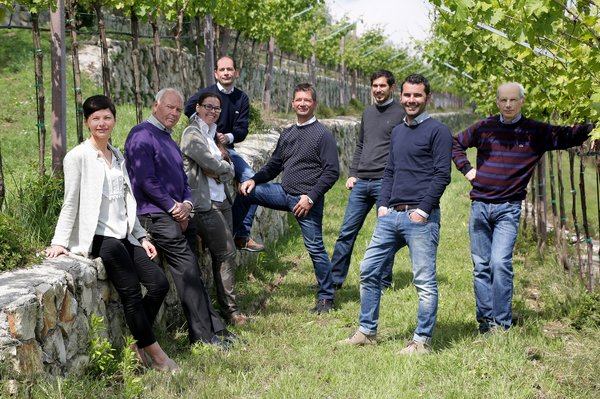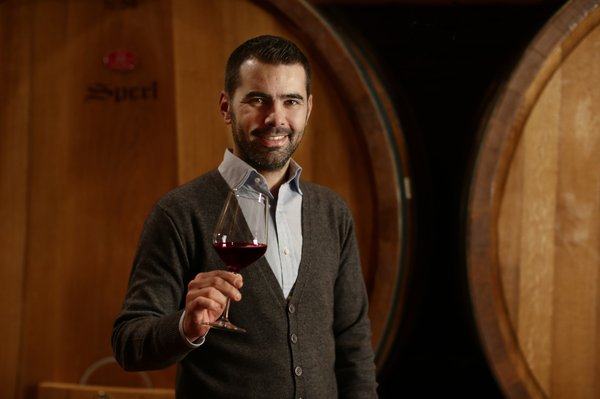The strength of the Family in the Classic Valpolicella

Meet the Producer:
Luca Speri
Luca, tell us about the origins of your winery, and what it has become today.
The story of our winery starts in the first half of the 1800s: a large number of vineyards but also olive trees, cherry trees, wheat and livestock. Over time, we specialised in wine production and today the Speri family has reached the seventh generation with an extension of about 60 hectares of vineyards in the most suitable areas of the classic area in Valpolicella. As early as after the Second World War, we were already almost fully specialised in grapes and wine, providing the local restaurants and also some in other Italian regions and Switzerland.
The strength of the company has always been and still is the teamwork that today involves three generations - Carlo, Alberto, Giampaolo, Giampietro, Laura, Chiara, Luca and Giuseppe - in the management of the production in all its phases, from the vineyard to the bottle.
Regarding the territorial heritage, we have always cultivated only native grapes of Valpolicella (Corvina, Corvinone, Rondinella, Molinara and other minor indigenous varieties), we only vinify the grapes from their own vineyards and we follow the whole process.
Luca, what exactly is your role in the company?
I deal with the commercial part of the company. We are not "big" in terms of numbers as in good vintages we can produce around 450,000 thousand bottles, but we are very well distributed in the world.
Like everyone else in our company, I first started working in the vineyards during the school period and then moved to the cellar and finally to the commercial department where I am now, following all our importers and obviously travelling. Being a family business, we always do a bit of everything and we are interchangeable with each other. Luckily, there is no time to get bored!
Today we hear more and more often about tradition, terroir, sustainability. What are your plans in this direction?
Tradition is for us a key word and I believe that in our case it goes hand in hand with terroir. We are a "historic" company in the sense that we have been making wine in Valpolicella Classica for 150 years and we have always tried to be true to ourselves, to our nature and traditions. This means we make only DOC and DOCG wines from Valpolicella and only from historical autochthonous grapes exclusively of our own vineyards.
In terms of terroir, in the 60s we started making wines by selecting and studying the cru, looking for the perfect soil and conditions for every type of grapes, we have always believed in terroir and in the strong personality and typicality of each territory. Terroir also means respecting the typical methods and culture of the place: for example, making natural and non-forced drying, never too pushed, or when we invested in viticulture, trying to maintain and "modernise" the traditional Veronese pergola training method. In the 90s we started studying and then planted an "open inclined pergola" which has a higher density and, at the same time, guarantees the right leaf system for a correct ripening. An alternative to the introduction of guyot in those years. To date, our system is the most adopted in the Classic Valpolicella area.
What do innovation and technology mean for you?
Technology and innovation are fundamental to reach higher quality levels. There must always be a great scientific study. We do not believe that innovation means making new wines with different profiles, in fact we think of technology as a tool to maximise the characteristics of personality and typicality. It is important to have a well-defined goal, which for us is quality.
For example, organic certifications: at the moment we are 100% organic certified on our 60 ha. This has been possible only after great studies and experiments, together with the production of new machines and innovative techniques, a deliberately long and careful path, made of tests, and experiments: errors and victories.
Which wine of your production would a person who doesn’t understand wine, and why?
Classic Amarone Sant’Urbano. Our most famous wine and certainly the one with more impact. I believe that a generous body, a depth and fullness - always elegant and never cloying - can impress anyone who is in front of a bottle, in particular of Amarone.
What is the typical consumer of your wines, to whom is your wine addressed?
In the world, we are more focused on the Ho.Re.Ca. sector and specialised wine bars. Our playground is gastronomy for characteristics of our wines: elegance, refinement and for their price. Basically, our consumer already has some experience and is looking for a defined style and personality and knows what they want.
Which is the positioning of your winery in the national and international markets?
The 25% is distributed in Italy and the rest "flies" to 50 other countries. We work exclusive importers and distributors, always aiming at starting long-term collaborations with key figures in the sector and we do the same in Italy. Some examples are the Meregalli distribution in Italy since 1994, Empson USA since the 70s and Lifford in Canada since 1988.
All the producers have at least one wine of their own production to which they are very attached, which is yours?
Valpolicella Classico Superiore Sant’Urbano. With the growth of Ripasso in the market we have forgotten a little about the historic wine of the area, which always gives great quality at an excellent price. I think it will be the wine of the future in our area. Great drinkability and elegance with good complexity, and a balanced alcohol percentage (13.5%). That is my "daily" wine, the one I choose when I am at home. Obviously, Amarone is more for important moments or meals.
Can you recommend a wine from another winery?
Difficult question. Besides Valpolicella, Nebbiolo has always impressed me a lot. Lately, I have highly appreciated the Valtellina Superiore Sassella Rocce Rosse by AR.PE.PE.
Do you have a lifelong ambition?
I have many ambitions! One is being able to taste the wines made today in 20 or 30 years and understand how they would have evolved. When I taste now the Amarone of the 70s and 80s made by our parents I find them spectacular. We really hope to be able to do as well, if not better... this is the goal we have given ourselves!
